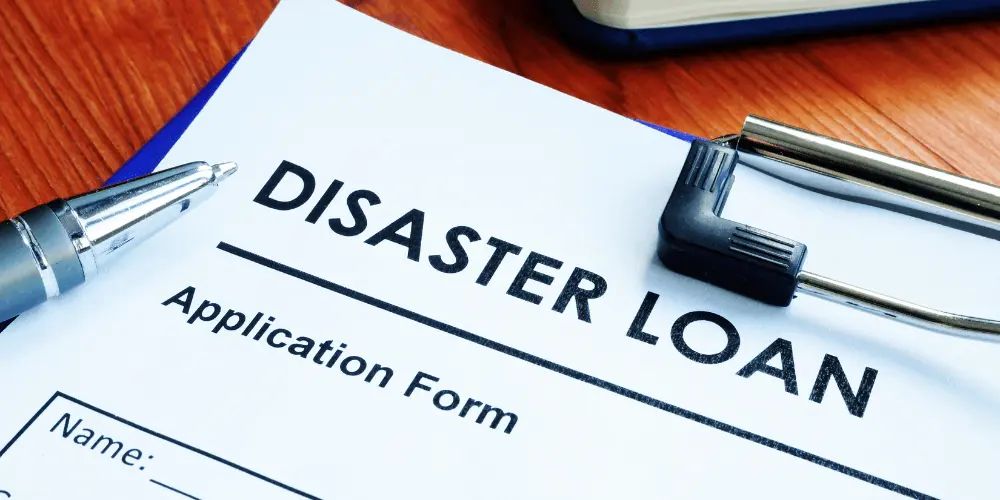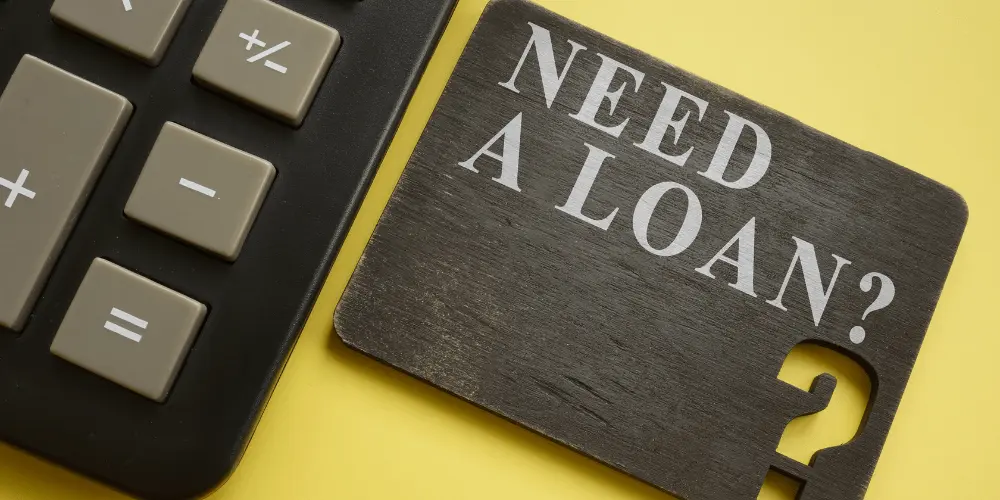
When a disaster strikes, people often think first about food, shelter, and safety. But the road to recovery also depends heavily on finances. Homes and businesses may be damaged, income may be interrupted, and repairs often cost more than insurance covers. For many families and small business owners, an SBA disaster loan becomes a vital part of rebuilding.
A key question for applicants is whether their credit score will hold them back. Understanding SBA disaster loan requirements will help you prepare for the application process and avoid surprises along the way.
The Small Business Administration does not look at credit scores the same way as banks or credit unions. Instead of applying strict cutoffs, the SBA considers repayment ability, available collateral, and the circumstances of the disaster. Still, credit history matters. A poor record may mean additional documentation is needed or that you qualify for smaller loan amounts.
If your finances are already stretched thin, it helps to protect your credit before applying. Steps like keeping up with minimum payments, disputing errors, and preventing identity theft can make a difference. For more on this, see Credit.org’s resource on How to Protect Your Credit During a Natural Disaster.
Disaster loans are low-interest financing options offered directly by the SBA. Unlike standard bank loans, they are available only after a declared disaster and are intended to help individuals, small businesses, and nonprofits recover.
There are several categories:
Unlike private financing from a bank or credit union, SBA loans have lower interest rates and longer repayment terms. You can learn more from the SBA’s official disaster assistance page, which explains how these programs are structured.
One of the most common SBA programs is the Economic Injury Disaster Loan (EIDL). These loans are designed to provide working capital so businesses, private nonprofit organizations, and small agricultural cooperatives can continue meeting obligations until normal operations resume.
EIDL funds may be used for:
Unlike property loans, EIDLs don’t require that your building be damaged. They are based on economic injury, such as loss of revenue when a business is closed due to evacuation orders.
For example, a family-owned restaurant located in a declared disaster area may not suffer physical damage, but if roads are closed and customers cannot visit, the economic injury is real. An EIDL can provide cash to cover payroll and utilities until traffic returns.
Credit score requirements for EIDLs tend to be more flexible, especially after large-scale disasters. The SBA reviews each application on a case-by-case basis, weighing credit history against repayment ability and available collateral.
A credit score is a three-digit number that summarizes your credit history, from on-time payments to total debt owed. Most lenders use it as a quick way to measure risk. The SBA considers it too, but with more context than a typical bank.
If your credit report already shows disaster-related late payments, don’t panic. The SBA knows that disasters disrupt normal finances. You may be asked to provide letters from creditors or proof that missed payments were due to the disaster. For guidance on how disasters affect your file, see Credit.org’s article Natural Disasters and Credit Reports: What You Need to Know.

The SBA sets clear rules for loan eligibility. Applicants may include:
Eligibility is not only about ownership but also about repayment ability. The SBA looks at income, debt levels, and overall financial health. If your credit score is low, demonstrating repayment ability through steady income or insurance proceeds may improve your chances.
Applicants must also be located in a declared disaster area. FEMA and SBA announcements specify which counties are eligible. To verify your eligibility, the FEMA disaster declaration page provides up-to-date information.
The loan process can feel overwhelming in the middle of recovery. Breaking it into steps helps:
If you need help, SBA representatives are available at Disaster Recovery Centers. You can also prepare by learning more about financial documentation and hardship letters through Credit.org’s resource on how to write a hardship letter.
When completing a disaster loan application, accuracy and completeness matter. The SBA requires:
Additional documentation may be requested, especially if your credit score is below average. Keep copies of all letters and receipts to support your case.
Applicants can strengthen their file by attaching a brief statement explaining how the disaster disrupted finances. This proactive step can prevent misunderstandings when the SBA reviews your credit report.
The SBA offers several loan types to cover different needs:
Each loan type has unique rules, maximum eligible loan amounts, and credit score expectations. For example, economic injury disaster loans are more focused on working capital than property damage.
To learn more about available loan types and relief programs, the CFPB’s disaster relief page offers a helpful overview of federal financial assistance.
An economic injury disaster can be devastating for small businesses. Lost customers, delayed supply chains, and property damage all affect cash flow. SBA disaster loans, especially EIDLs, are designed to keep normal operations going until revenue returns.
However, taking on new debt will affect your credit. Payments are reported to the credit bureaus, and missing them can negatively impact your score. On the other hand, successfully repaying an SBA loan can build positive credit history.
Business owners should be realistic about repayment ability. A loan that is too large may create long-term problems. Work with your accountant, insurance company, and SBA representatives to choose an amount that covers needs without overwhelming your budget.
If you are unsure, Credit.org offers counseling on managing disaster-related debt and rebuilding credit, including Disaster Recovery Counseling.
One of the most appealing aspects of SBA disaster loans is the interest rate. Rates are typically lower than private loans, making repayment more manageable for disaster survivors. For homeowners and renters, rates may be as low as 1.5–2.5 percent, depending on income and ability to repay.
Repayment terms can stretch up to 30 years. The SBA sets loan terms on a case-by-case basis, considering income, expenses, and future damage risks. Longer terms reduce monthly payments but increase the total interest paid over time. Borrowers should carefully weigh short-term affordability against long-term costs.
The SBA also considers other factors such as the financial impact of the disaster, the borrower’s reasonable ability to repay, and collateral availability. A clear repayment plan improves the likelihood of approval.
The SBA does not publish a single minimum credit score requirement, but most applicants need to demonstrate at least fair credit. Reports suggest that a score of around 620–640 may be a common benchmark for approval. Still, the SBA looks beyond numbers to repayment ability and credit history.
Factors influencing loan eligibility include:
Applicants with lower scores can sometimes qualify if other factors are strong. For example, a small business with a solid insurance claim or strong cash flow projections may be approved despite weak credit.
If you want to dive deeper into understanding scores, Credit.org’s Consumer Guide to Good Credit explains how lenders review credit reports and why accuracy matters.
Completing a disaster loan application can be challenging during an emergency. Families may have lost documents, and small businesses may face delays in gathering financial statements. Missing paperwork can slow down approval or even lead to denial.
Common challenges include:
Applicants who feel overwhelmed should seek help early. SBA representatives can walk you through the loan process, and nonprofit organizations like Credit.org provide educational resources and counseling.
When applying for SBA disaster loans, it helps to understand the broader factors that shape eligibility beyond your credit score. The SBA aims to make assistance available for as many disaster survivors as possible, but applications are still reviewed case by case.
Insurance coverage and collateral. The SBA will consider whether insurance claims will fully cover losses. If repairs are only partly reimbursed, a disaster loan may help cover repairs for damaged property. Insurance proceeds are factored into loan amounts so that financial assistance is fairly distributed.
SBA loan application details. During the loan process, you may be asked to provide additional documentation, such as proof of insurance, a record of other assets, or evidence of a primary residence. Private non profit organizations and most private nonprofit organizations also qualify for disaster assistance, though their requirements may differ. SBA lenders and the agency itself both evaluate repayment ability and borrower’s ability when determining loan eligibility.
Loan program and loan types. SBA disaster loans are not one-size-fits-all. The loan program you apply for will depend on whether you are a homeowner, renter, small business owner, or nonprofit. Loan types range from personal property loans to business physical disaster loans, and each has different credit score requirements. Eligible loan amounts are influenced by income, expenses, and whether your business is located in the declared disaster area.
Repayment structure. Interest accrual, deferment periods, and repayment terms vary depending on the loan application. Some borrowers may receive a deferment period before payments are due, which helps stabilize finances. In certain cases, the SBA may extend repayment terms for vacation properties or secondary homes, though these loans are more limited.
Funding disbursement. SBA loans are often released in stages. A first disbursement may arrive quickly to help with urgent expenses, while later disbursements follow as additional documentation is provided. Loans are rarely fully covered on day one, but the staged approach ensures funds match the recovery timeline.
Evaluating reasonable ability. Even with flexible credit score requirements, the SBA will check for reasonable ability to repay. That means showing steady income, insurance coverage, or other assets that demonstrate long-term stability.
When the President or SBA issues a disaster declaration, it formally opens the door for federal aid and SBA loans. Applicants must show their home or business located in the declared disaster area to qualify. This declaration ensures that resources are directed to communities with the greatest need.
Even with approval, many survivors wonder how much a loan will actually cover costs. Disaster loans are designed to replace or repair damaged property, but they may also extend to working capital for small businesses. For example, funds can help pay employees, restock supplies, or handle utility bills when revenue is interrupted.
If the loan amount does not fully cover your losses, combining assistance programs can help. Insurance payments, FEMA grants, and SBA loans may all work together to bridge gaps. Understanding how the disaster declaration shapes eligibility gives you a clearer picture of the resources available, and how much of your recovery costs will be covered.
SBA disaster loan credit requirements are only one part of recovery. While credit scores influence eligibility, the SBA also considers repayment ability, income, and overall financial stability. Preparing your documents, checking your credit report, and understanding the loan process will make the experience less stressful.
Key takeaways:
Need one-on-one help building your recovery plan? Connect with our team through Disaster Recovery Counseling for guidance on documents, timelines, and credit steps tailored to your situation.